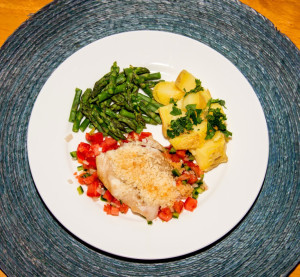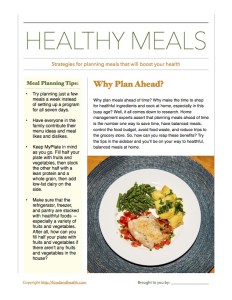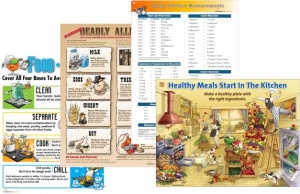 Okay, I’ve got a story for you today. My husband and I were recently eating lunch — I had made us each a quick salad with lettuce, apples, some thawed frozen berries, avocado, leftover grilled chicken and homemade balsamic vinaigrette. As we ate, my husband commented, “It’s amazing that you look in the refrigerator and see salad; when I look in the refrigerator I just see soda.”
Okay, I’ve got a story for you today. My husband and I were recently eating lunch — I had made us each a quick salad with lettuce, apples, some thawed frozen berries, avocado, leftover grilled chicken and homemade balsamic vinaigrette. As we ate, my husband commented, “It’s amazing that you look in the refrigerator and see salad; when I look in the refrigerator I just see soda.”
That seems to capture a common sentiment in a nutshell. How do people plan menus and think about turning what’s available into a healthful meal? Is this something that’s intuitive or can it be learned?
For me it’s easy, because I love to cook and experiment with food. But what about people who really don’t like to prepare meals or don’t have these skills?
All home management experts say that planning meals ahead of time is the number one way to save time, have balanced meals, control the food budget, avoid food waste, and reduce trips to the grocery store. However, I’m realistic enough to know that most families don’t do this.
So, how can we, as health educators, make this easier for our clients?
Here are a few of my latest ideas…
- Try planning just a few meals a week instead of setting up a program for all seven days. If this works, then perhaps you could develop a menu rotation.
- Have everyone in the family contribute their menu ideas and meal likes and dislikes.
- If other members of your family are just learning to cook, or don’t yet have a wide recipe repertoire, having menus posted can help them learn and develop their cooking and menu-planning skills.
- Keep MyPlate in mind as you go. We all know the concept of trying to fill half the plate with fruits and vegetables at each meal, so now it’s time to put it into action. Remember to fill the other half with a lean protein and a whole grain, then add low-fat dairy on the side to round out the meal.
- Post your planned menus. That way, everyone in the family knows what’s for dinner. This could help the first one home to get dinner started too!
- Make sure that the refrigerator, freezer, and pantry are stocked with the foods that you need for these menus. It’s especially important to have a variety of fruits and vegetables available for meals and snacks. After all, how can you fill half your plate with fruits and vegetables if there aren’t any fruits and vegetables in the house?
Try these tips and who knows? Maybe the next time your family looks into the fridge, they’ll see dinner!
By Cheryle Jones Syracuse, MS, Professor Emeritus at The Ohio State University
Here’s a free PDF handout with a few of the top tips from today’s post…
Here are some more healthy meal resources, brought to you by the Nutrition Education Store!



